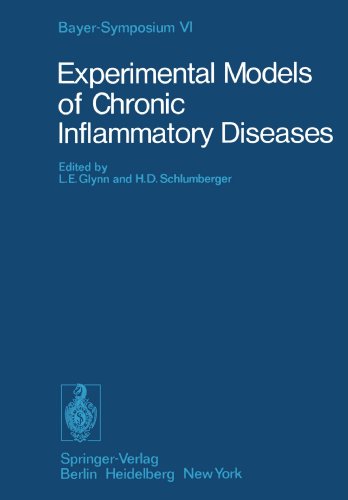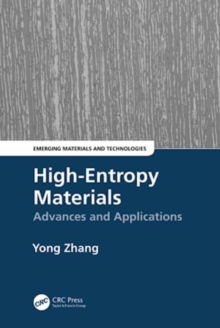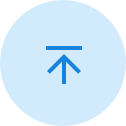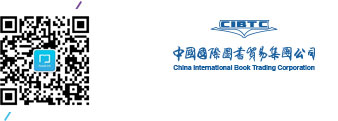图书简介
With the introduction of antibiotics acute inflammatory disease has ceased to be the dominant problem in general medical practice and its place is now increasingly occupied by chronic inflamma tory disease of which the rheumatic diseases constitute the most important group. lwo aspects of these diseases need to be consid ered, their aetiology and their pathogenesis. In some respects the latter is more important since even when the aetiology is known, as for example the haemolytic streptococcus in rheumatic fever, the mechanism by which the infecting agent accomplishes the development of the lesions that characterise the disease are still largely unknown. Still more so is this the case in rheuma toid arthritis and other chronic inflammations where the aetio logical agents are unknown. In an attempt to clarify the pathogenic mechanisms involved, sev eral attempts have been made to induce comparable lesions in ex perimental animals, partly to test underlying hypotheses, and partly to provide test situations for the trial of new therapeu tic agents. In view of the deficiencies in the current drug treat ment of chronic inflammatory disease there are many who feel that this is largely due to the inadequacy of the models avail able for test purposes.
Welcome.- Experimental Models of Rheumatoid Lesions.- Experimental Models of Rheumatoid Inflammation. With 4 Figures.- Persistence of Antigen in Experimental Allergic Monoarthritis.- Experimental Subcutaneous Granulomata Simulating R.A. Nodules.- Studies on the Mitotic Responsiveness of ?T? Cells After Stimulation with Contact Sensitizing Agents. With 2 Figures.- Rheumatoid-Type Lymph Node Changes in Animals Exhibiting Immunoregulatory Defects. With 6 Figures.- Experimental Models and Systemic Lupus.- Autoimmunity: A Problem of Disordered Immunologic Regulation.- Chronic Infections of C-Type RNA Viruses.- Evidence for a Virus in Canine Systemic Lupus Erythematosus.- Viral Replication in Lymphocytes and the Pathogenesis of Connective Tissue Diseases. With 8 Figures.- Recent Approaches to Experimental Immune Complex Disease and Allergic Vasculitis.- Immune Complex Diseases: Cellular Mediators and the Pathogenesis of Inflammatory Tissue Injury Produced by Immune Complexes. With 1 Figures.- Antibody Affinity, Macrophage Function and Immunoregulation in Murine Immune Complex Disease. With 4 Figures.- Features of Human Spontaneous Vasculitis Reproduced Experimentally in Animals. Effects of Antiglobulins, C-Reactive Protein and Fibrin.- Mechanisms Involved in Clinical Allergic Vasculitis.- Significance of Anti-IgG Antibodies in Experimental Arthritis. With 5 Figures.- Immune Complex Arthritis ? In Man and Experimental Animals. With 2 Figures.- Arthritis During the Course of Experimental or Natural Infection.- Rheumatoid Arthritis and the Virus Hypothesis. With 3 Figures.- Teno-Synovitis (Viral Arthritis) of Chickens.- Hemostasis, Fibrin Incorporation and Local Mesenchymal Reaction in Erysipelothrix Infection as a Model for Rheumatism Research. With 18 Figures.- Erysipelothrix Arthritis in Rabbits.- Mycoplasma Infection and Arthritis of Chickens.- Experimental Models of Streptococcal Arthritis: Pathogenetic Role of Streptococcal Products and Prostaglandins and Their Modification by Anti-Inflammatory Agents. With 20 Figures.- Control Mechanisms in Inflammatory Responses.- The Regulation of the Participation of Mononuclear Phagocytes in Inflammatory Responses. With 10 Figures.- The Kinetics of Chronic Inflammatory Cellular Infiltrates.- Pathology of Lymphoid Tissue in Rheumatoid Arthritis and Allied Diseases. With 16 Figures.- Lymphocyte Infiltration and Proliferation of Stroma Cells of Synovial Tissue in Rheumatoid Arthritis. With 6 Figures.- Aspects of Synovial Biodegradation. With 15 Figures.- An Effect of Joint Fluid on Blood Monocytes. With 1 Figures.- Should We Stimulate or Suppress the Inflammatory Response?.- Should we Suppress or Stimulate the Immune Response in Inflammation? With 3 Figures.- The Action of Anti-Inflammatory Drugs on the Lymphocyte-Macrophage Axis. With 3 Figures.- Problems in Analysing the Actions of Immunosuppressive Agents in Immuno-Inflammatory Disease. With 4 Figures.- Influence of Anti-Inflammatory Drugs on Connective Tissue Metabolism. With 11 Figures.- Final General Discussion and Résumé.
Trade Policy 买家须知
- 关于产品:
- ● 正版保障:本网站隶属于中国国际图书贸易集团公司,确保所有图书都是100%正版。
- ● 环保纸张:进口图书大多使用的都是环保轻型张,颜色偏黄,重量比较轻。
- ● 毛边版:即书翻页的地方,故意做成了参差不齐的样子,一般为精装版,更具收藏价值。
关于退换货:- 由于预订产品的特殊性,采购订单正式发订后,买方不得无故取消全部或部分产品的订购。
- 由于进口图书的特殊性,发生以下情况的,请直接拒收货物,由快递返回:
- ● 外包装破损/发错货/少发货/图书外观破损/图书配件不全(例如:光盘等)
并请在工作日通过电话400-008-1110联系我们。
- 签收后,如发生以下情况,请在签收后的5个工作日内联系客服办理退换货:
- ● 缺页/错页/错印/脱线
关于发货时间:- 一般情况下:
- ●【现货】 下单后48小时内由北京(库房)发出快递。
- ●【预订】【预售】下单后国外发货,到货时间预计5-8周左右,店铺默认中通快递,如需顺丰快递邮费到付。
- ● 需要开具发票的客户,发货时间可能在上述基础上再延后1-2个工作日(紧急发票需求,请联系010-68433105/3213);
- ● 如遇其他特殊原因,对发货时间有影响的,我们会第一时间在网站公告,敬请留意。
关于到货时间:- 由于进口图书入境入库后,都是委托第三方快递发货,所以我们只能保证在规定时间内发出,但无法为您保证确切的到货时间。
- ● 主要城市一般2-4天
- ● 偏远地区一般4-7天
关于接听咨询电话的时间:- 010-68433105/3213正常接听咨询电话的时间为:周一至周五上午8:30~下午5:00,周六、日及法定节假日休息,将无法接听来电,敬请谅解。
- 其它时间您也可以通过邮件联系我们:customer@readgo.cn,工作日会优先处理。
关于快递:- ● 已付款订单:主要由中通、宅急送负责派送,订单进度查询请拨打010-68433105/3213。
本书暂无推荐
本书暂无推荐












